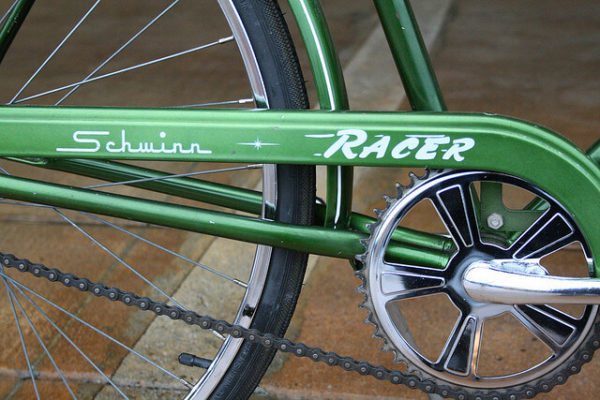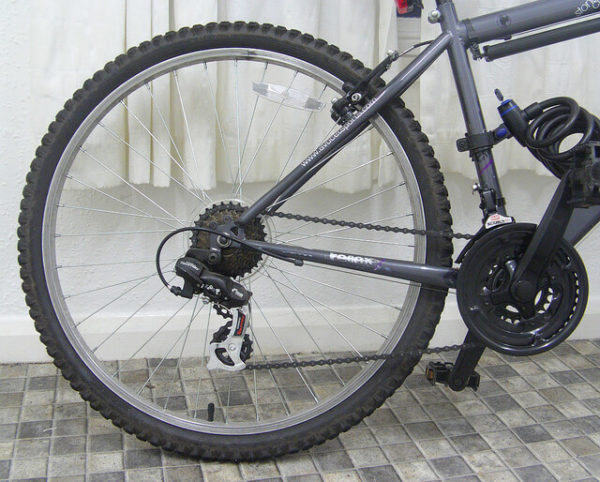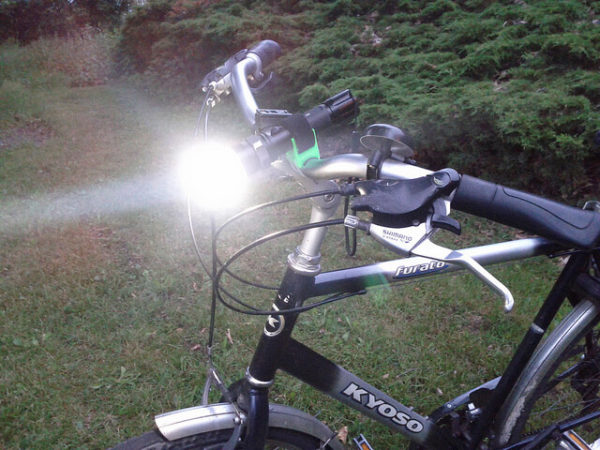These tips come up in the top 10 as they apply to all drivers, regardless of whether they are experienced or not.
Changing the speed should only be done while pedaling slowly, with mild pressure on the pedal.
The reason for this is simple. When a lot of tension is put on the chain caused by strong application of pressure on the pedals, the front derailleur has difficulty pushing the chain from one sprocket to another, and it often ends up with a rendering sound. Also, either the front or the rear transmission, the gears change more smoothly if there isn’t as much pressure on the pedals.
Lubricating the chain.
The chain is the only area of friction on the bike, which means that it requires frequent attention, and there are correct and incorrect ways to maintain it.
For a chain that is dry, it is better to only slightly oil the chain. This part is essential because any excess oil that is on the chain has a potential for dust to collect and stick on it, not to mention mud.
The idea is to apply just enough lubricant to keep the transmission chain quiet and smooth, while ensuring you do not add too much oil is the correct way to improve the gear speed changes.

Bikes are not weather proof.
It sounds obvious, but nevertheless, we often see bicycles that are ruined because someone decided to leave them outside for a long time. When exposed to bad weather conditions many metal parts can corrode and even a stainless steel part can rust, which can cause many problems for the cyclist.
Driving in the rain and even the snow is not harmful by itself, but after that, your bike needs to be stored inside to dry. Bikes do not require a heated room in winter but they do require drying. It is possible to ride a bike in winter on salted roads (contractors often apply salt and grit to roads in winter to prevent accidents), but it requires more maintenance.
Tires easily lose pressure.
This primarily occurs because of the reduced weight of internal and external tires.
Road tires should be maintained at about 7 bar in terms of pressure, but they should be checked before each ride because they can lose up to 3 bars per day.
For hybrid style bikes, this number can vary. In this case, pressure should be maintained in the mid-range of the manufacturer’s recommendations in the instruction manual, which can also be found on a printed label on most new tires, and the inflation should be checked every 7 days.
MTB loses pressure much more slowly because of the lower pressure, but they also should be checked every week. Most people will drive 2.5 bar for a ride in the woods and 3 to 4 bars for driving on asphalt.

Some ideas to make your cycling more pleasant.
Although cycling is an easy exercise, our bodies are not designed to ride bikes. The back, neck, buttocks, and arms begin to ache after some time spent sitting stationary on the seat. A great help can be to adjust parts such as seat and steering wheel to a suitable position or to use gloves.
Beforehand, cyclists should stretch before, during and after the ride so that their back and neck muscles will not cramp or become injured while sitting in a position on the bike, and so that they will be more relaxed. Strengthening the abdominal muscles is also good to reduce stress on the back and buttocks.
The seat height should be adjusted to reduce the strain on your arms. Today there are a large number of seats specifically designed to reduce pressure and allow blood flow where it is needed.
Make sure that the transmission cable does not bend.
When the bike is new, your transmission cable stands straight on the frame. The transmission cable (or if transmission is directly attached to the frame) can bend. Always monitor your transmission cable.
The list of standard wearing parts.
Chain:
Always maintain your chain with proper oil. If you ride your bike very often you may need to replace the chain annually or even more often if you cycle over 3000km a year.
Brake pads:
MTB with brakes on the wheels need visual monitoring every week. All brake pads on the rim show signs of wear, which are easily visible and should be checked regularly.
Disc brake pads often last only one or two seasons and should be periodically checked to ensure there is at least 1mm of brake material on the surface of the workpiece.
Cables and cords:
They often end up clogged and corroded even with regular and sufficient maintenance. This causes the brake to pull harder, and significantly reduces quality and longevity.
Complete replacement is required to give the feeling of driving a new bike.
Lights:
Your bike needs front and rear lights, especially if you are driving at night. It is recommended that the front has strong lights (you can choose from many LED lights available on the market right now).
It is recommended that you choose a strong red light for the rear. You can also find red laser lights that will be alert drivers approaching from the rear of your presence.
All other moving parts also need to be changed, but much less frequently.

Pay attention to warning signs
All seats and steering wheels are clearly labeled with information which defines the maximum pull-outs. This guarantees that the parts will operate safely.
Minimum list of useful accessories
Number one is a good quality helmet. If you plan to cycle often for serious distances, you may need cycling shorts (or pants), gloves, protective goggles, a T-shirt and socks that will make your ride more pleasant.
Another very important thing you need is to carry sufficient amounts of water. If you go out for a few hours or longer, bring some energy replenishing snacks such as a muesli bar, banana or a drink. You’ll be much happier.
How to deal with traffic
Always obey all traffic laws, not only because they are laws, but because they will keep you safe and out of the way of other vehicles.
Incoming search terms:
driving mountain bike
Leave a Reply
You must be logged in to post a comment.